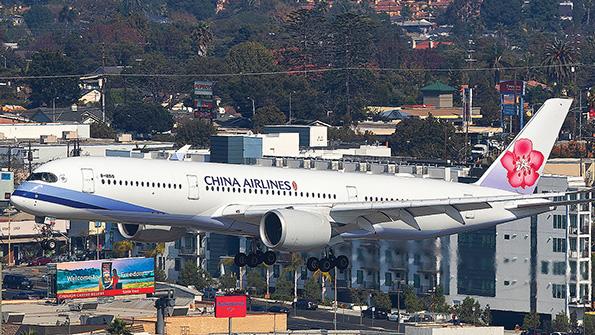I clipped this from my work email, What he commented on especially with the slowing or negative Chinese population growth of the Chinese is something to make note of and a lot of people are glossing over that, especially the CCP. I thought had blogged about the problems at some of the European airports especially AMS(Amsterdam) choking down passenger travel during the farmer protest earlier this year in the name of climate change and this is still an ongoing problem, because it causes ripples through the EU because it forces passengers to go to other airports then ride the rail to get to whatever they are going. I discovered I never published that story, it was buried in my emails (Bad MrG, Bad, Bad, Bad) well anyway I saw this and this ties in with the other disruptions that our "betters" are trying to start foisting in on us in their attempts to "make us mind" and know our place.

Travel on Chinese airlines was slowing before the COVID-19 pandemic as its population declines.
A decade ago, my colleague Jonas Murby and I gave a speech with a contrarian argument that air travel (as measured by revenue passenger kilometers) could not grow at a 4-5% rate forever and eventually would slow. We argued that the imperative for emissions reduction, the growth of high-speed rail, infrastructure constraints, and air travel maturation in key markets would all contribute to the slowdown. The audience’s reaction to the speech was hardly enthusiastic.
While aviation focused on recovery from the COVID-19 pandemic and malfunctioning supply chains over the last several years, something significant occurred in industry’s long-term growth forecasts: they slowed considerably. Boeing’s 2019-41 forecast calls for 3.8% growth, while Airbus’ posits 3.6% growth. My company’s own forecast is also 3.6%. Why did this happen, and what does it mean for stakeholders?
Market maturity is an important factor. A good rule of thumb is that air travel grows at twice the rate of GDP in emerging economies and is closer to GDP growth in advanced countries. AeroDynamic Advisory forecasts 2.5% growth in North America, 2.3% in Europe, and just 1.5% in Northeast Asia for the 2019-39 time frame.
What has changed in recent years is the realization that the Chinese market is slowing. Air travel in China was slowing before the crisis. The country’s population is peaking and entering a period of long-term decline. A recent estimate by Wei Chen, a Chinese demographer, forecasts that it could lose 100 million people by 2050. The outlook for the economy also faces challenges as President Xi Jinping is making private companies subservient to the needs of the state and government-owned enterprises and vilifying private wealth. Economic decoupling from the West will not help either. Economists remind us that GDP growth is a function of two factors: population growth and productivity growth; in China, both are trending in the wrong direction. AeroDynamic’s 20-year growth forecast is 4.4%—a far cry from the double-digit growth of past years.
Another change is the effect of aviation’s zero-emissions imperative. Europe recently imposed mandates for sustainable aviation fuel (SAF) usage. Beginning in 2025, operators will be obligated to use 2% SAF, increasing to 5% by 2030, 32% by 2040, and 63% by 2050. The Biden administration is also pursuing a dramatic increase. With cost of SAF at least three times higher than kerosene, the price of aviation fuel—and air travel—will therefore increase in some regions. Airbus took regional variations in anticipated fuel and CO2 prices into account for the first time in its most recent forecast. Intra-Western Europe travel—the epicenter of sustainable aviation—will grow at a sluggish 1.6% rate.
Another type of mandate is emerging—airport capacity limits. The Dutch government recently announced annual movement limits at Amsterdam Schiphol Airport of 440,000 movements per year—well below the 500,000 movements each in 2018 and 2019. Aviation emissions reduction is a prime motivator for the new policy. While this type of draconian measure has yet to be implemented by other major hubs, it is a harbinger of what could unfold in Europe and parts of North America. There are also growing limits for short-haul European flights. Norway established a quixotic goal that all domestic flights must be electrified by 2040. In France, domestic flights that compete with high-speed rail are forbidden. As a result, European flights of less than 400 km (250 mi.) will likely decrease in the future.
These negative trends do not mean jetliner production will drop off a cliff anytime soon. On the contrary, the focus on emissions reduction means retirements will grow. Airbus projects demand for about 39,000 jetliners through 2041, with replacements for retiring jets comprising 40% of demand. Boeing believes retirements will drive nearly half its projected demand for about 40,000 jetliners from 2019-41. Traditionally retirements drove 30% of demand.
One point is abundantly clear: The days of easy, consistent 5% air travel growth are over. Aviation stakeholders—including governments, airports, airlines, suppliers and investors—would be wise to take note.
The views expressed are not necessarily those of Aviation Week.

No comments:
Post a Comment
I had to change the comment format on this blog due to spammers, I will open it back up again in a bit.